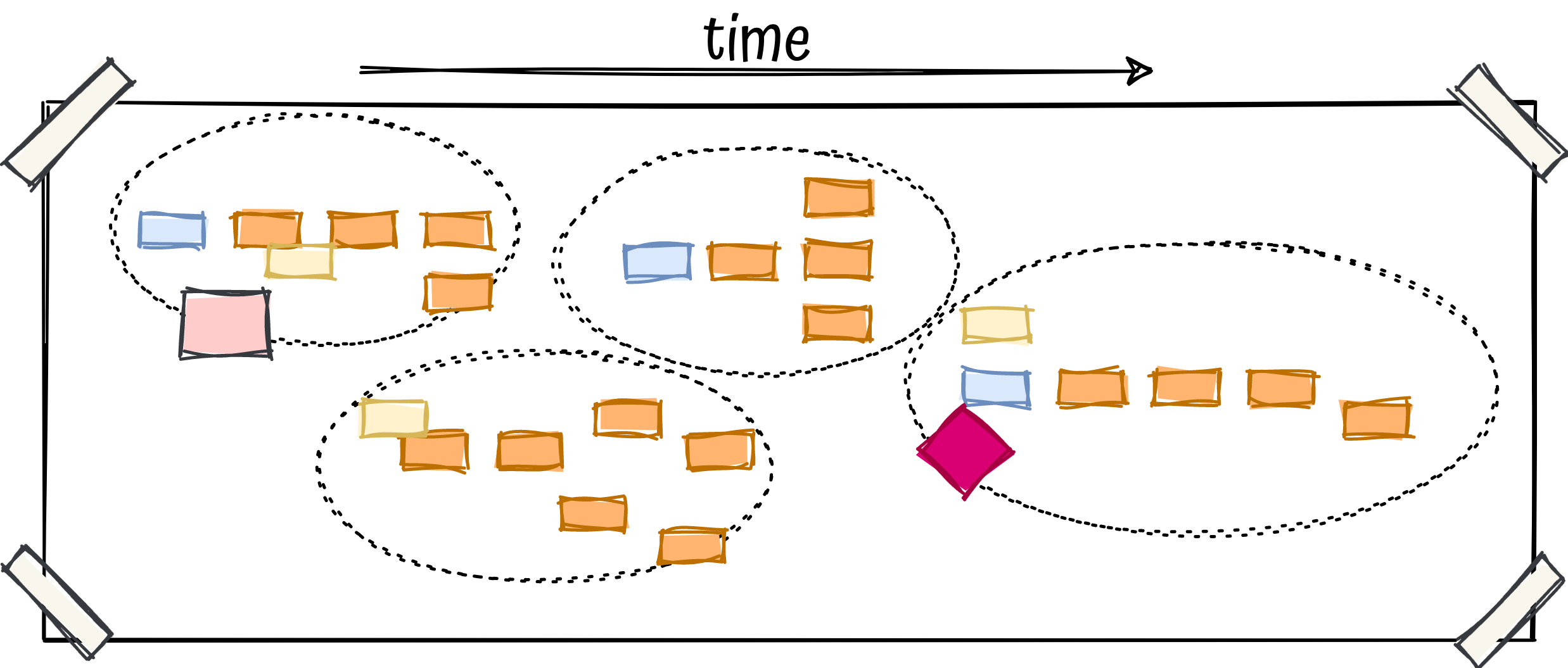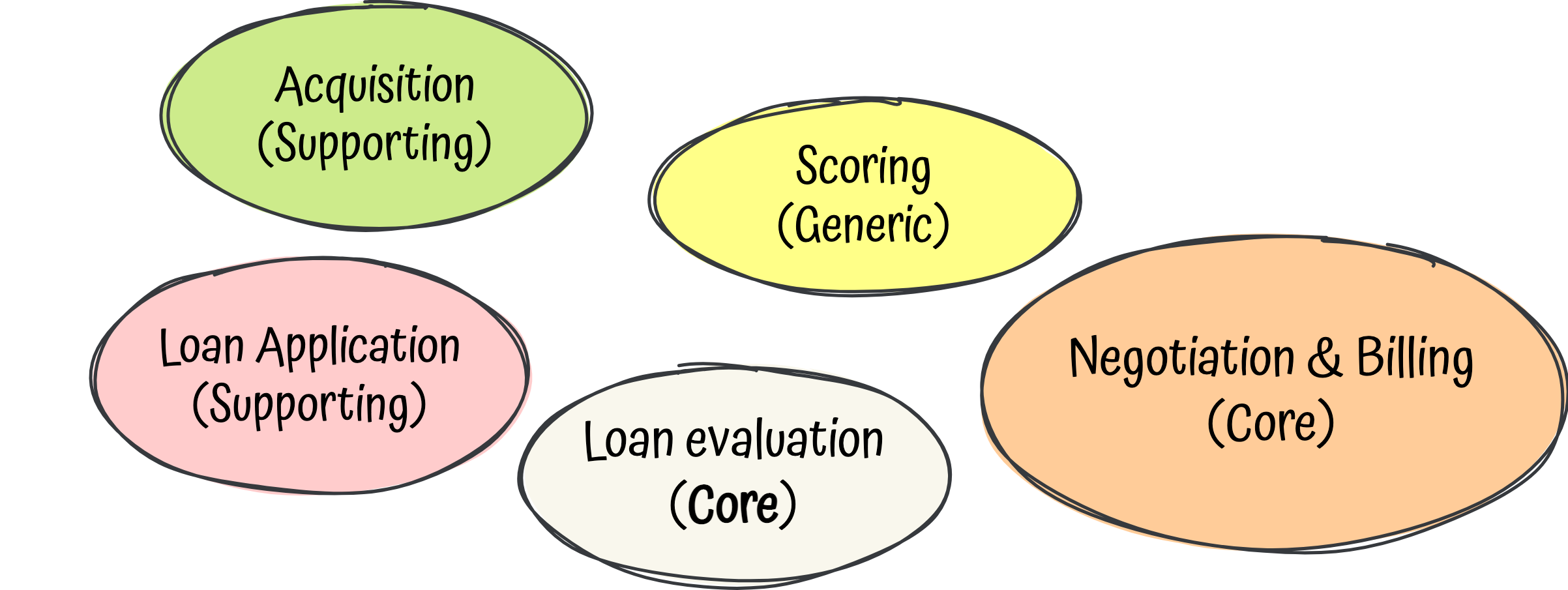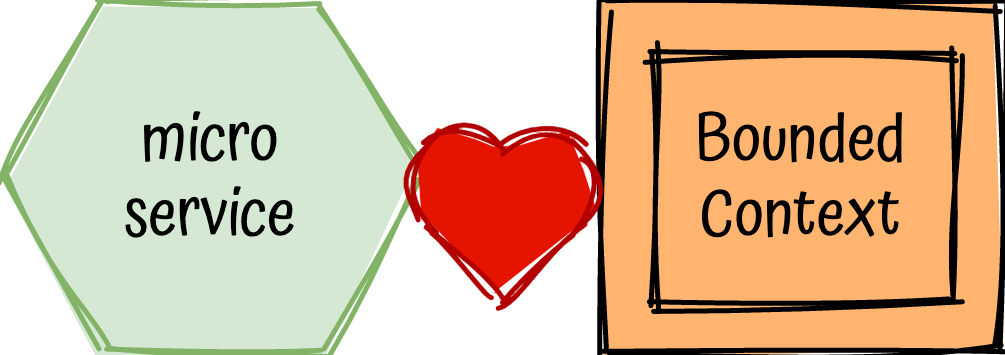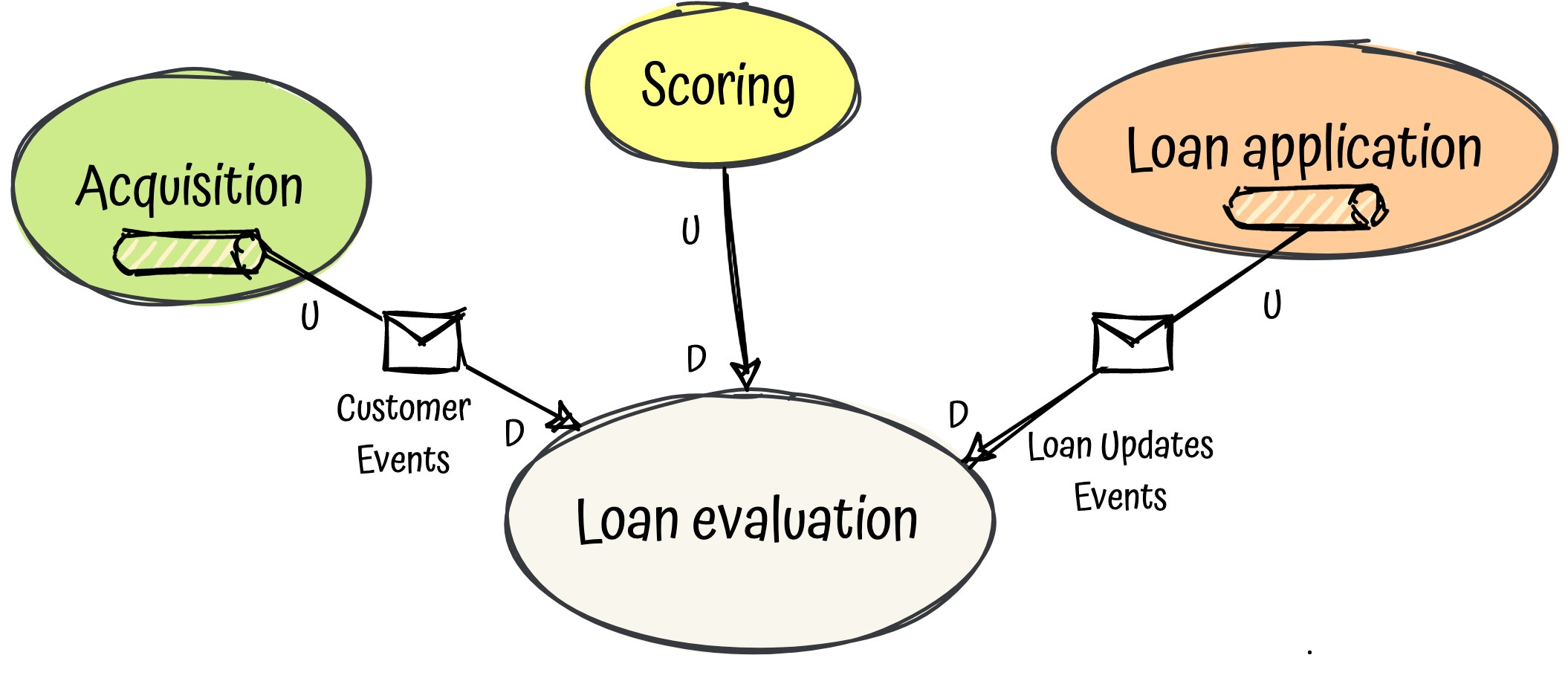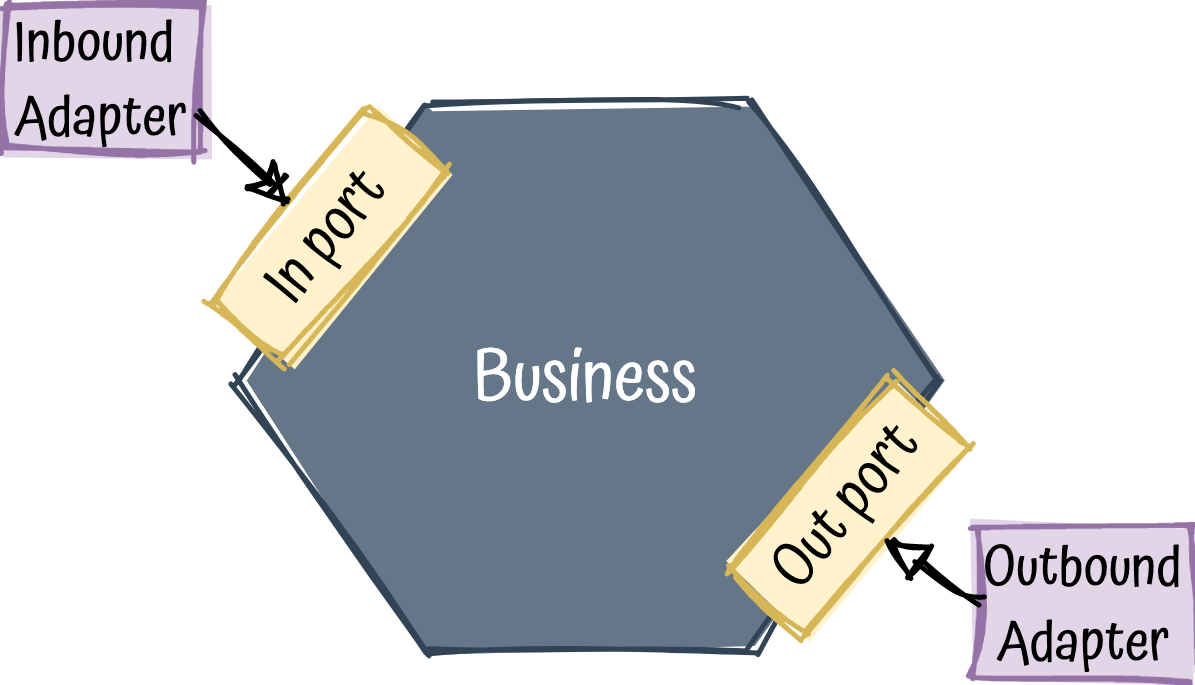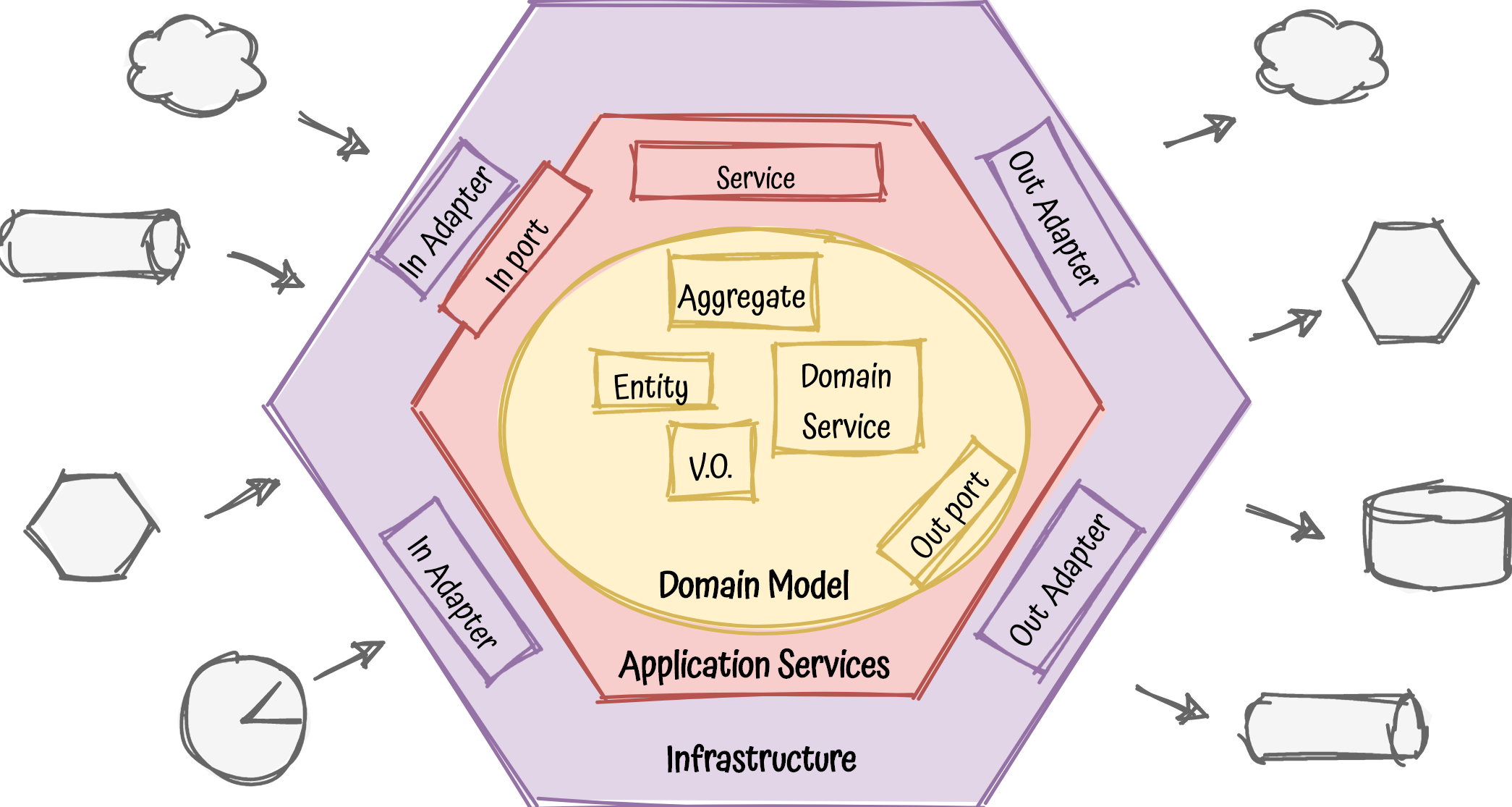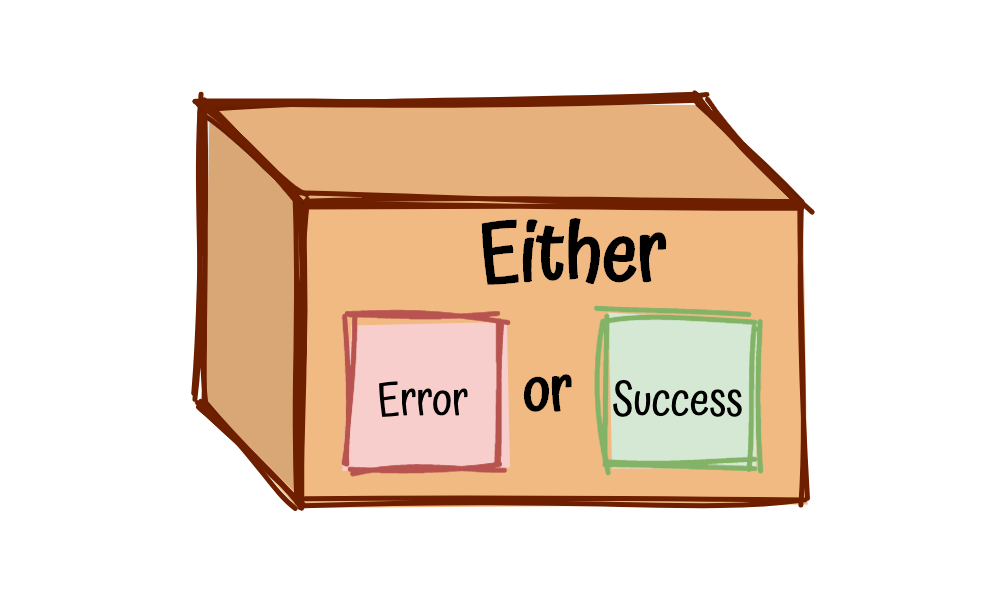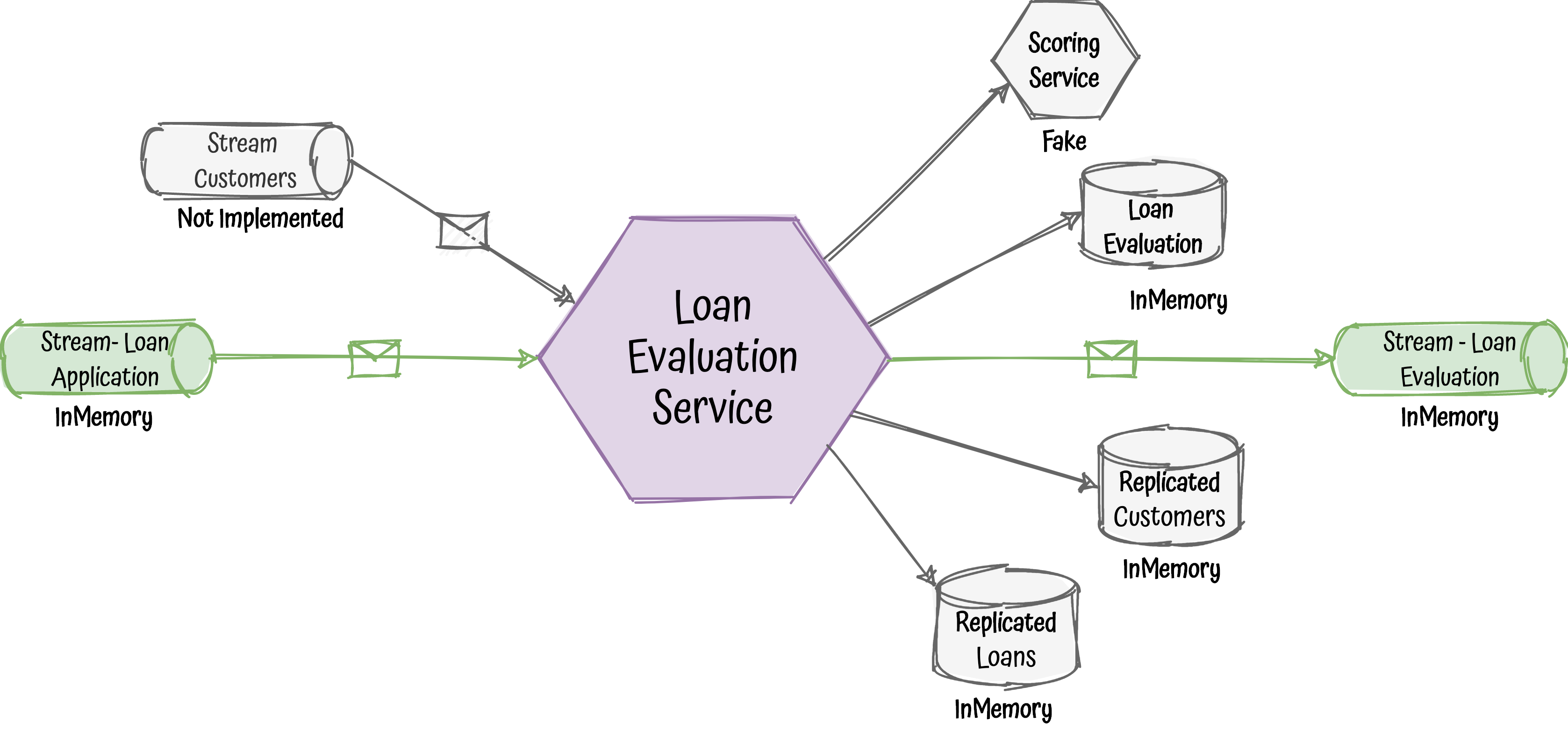functional-domain-driven-design
A pragmatic and balanced approach to combine DDD, FP, hexagonal architecture, microservices and Kotlin.
Content
- functional-domain-driven-design
Introduction TL;DR
As a developer, I've been working almost all my career in JS and java, imperative OOP and layered architectures, through different companies and variety of domains.
Some years ago I decided to open my mind to new ways of thinking, so I decide to learn functional programming with Scala, well ... at least I tried, my head almost exploded, literally :). I also tried different programming languages and paradigms such as ruby, elixir, typescript, haskell or even ocaml, till finally I fell in love with kotlin, a good mix of everything.
One day I realised that I didn't know what the S of Solid really meant, so it led me to understand dependency inversion principle and the architectures based on it ... And I fell in love again, this time with hexagonal architecture.
Parallel to all of that, I learned that software engineers should not work alone and isolated, we need to work together, so, welcome agile and XP.
What was next? divide and conquer! microservice architectures, it was time to me to time to create small, autonomous and decoupled services. But, actually, I was going more to the path of creating distributed monoliths.
Still, something was missing, that's when I was introduced to domain-driven design. Wow, how it was possible to work all those years without paying attention to the most important thing? The business.
Let's put everything together:
Wow, a lot of buzzwords, right?
Now, I still feel that I know nothing, I still have to review concepts time to time, but in this project I will try to apply DDD, FP, hexagonal, microservices and kotlin in a real scenario in order to see how powerful they are.
The problem
Software is meant to solve problems, therefore, let's imagine something to solve then ...
Note: This section and the following one are about DDD, feel free to jump directly to the implementation section if you are not interested, or you already master all the DDD concepts.
The domain - Give me the loan!
In DDD terminology, the domain is the group of business problems we are trying to solve associated with one activity, or more simple, what do we want to solve? In our case, we will work on an online company that gives Fast Personal Loans called Give me the loan!.
The idea is pretty simple, you download the mobile app, create an account, take one photo of your ID and some of your last payslips, and then, request for a personal loan with very low interests!.
DISCLAIMER: This is just a domain to play with, I am not an expert, maybe some assumptions, terms or processes are wrong; I apologise in advance.
Discovering the domain
We, as developers, are eager to code, but in order to do it efficiently, let's understand what we have to do first. In DDD world, this part is the strategic part, a crucial aspect of DDD, discovering the domain, breaking it down in sub-problems, loose-coupled parts that we can tackle autonomously, the sub-domains.
There are some techniques to do so, but one of the most effective and quickest way to do it is a big-picture event-storming, a workshop-based method where we only need a big space, a wide wall, a lot of sticky notes and the right people.
I am not an expert of running this kind of workshop, and the goal of this post is not to explain it; but in a nutshell, an event-storming is a collaborative and visual tool that can be used for several purposes, one of them is to discover and decompose a domain into subdomains through domain events (If you are already interested here some tips.)
Coming back to our cool problem, let's suppose we have run this session with all the stakeholders and these are the different types of subdomains discovered:
Sub-domains summary:
- Acquisition: Responsible for account creation, kyc and customer data.
- Scoring: Credit scoring (out-sourced).
- Loan application: All the loan application lifecycle.
- Loan evaluation: Basically, it decides if we should lend the money to the customer.
- Negotiation & Billing: All the loan management after a decision has been made, including negotiation, contracting, billing ...
During these sessions we also spotted that a Loan have different meanings depending on the subdomain, we are discovering the ubiquitous language, another DDD concept.
The solution
Bounded context
We have our company divided in different subdomains, we already know which ones are important, but what about teams, services, repositories, in summary, what about boundaries?
Here it comes, one of the most important concepts of DDD, yes, this word so complicated to explain, the Bounded Context, I really like to make an analogy with FP here, BCs are the monads of DDD, they are super important but everyone struggles to explain them.
But, what is exactly a bounded context?
A bounded context is a well delimited area of the domain where a model applies, it defines explicit boundaries and consistency in terms of vocabulary, organization, application, teams, architecture, source-code or even data, most of the times within a subdomain.
Still broad and fuzzy?
Let's simplify it, a BC is just the other side of the problem, the solution, if a sub-domain is the problem, a BC is how you solve it.
Instead of try to elaborate a definition, we can define a set of rules to understand it better:
- A BC often maps one-to-one with a subdomain, but not always.
- A BC is owned by one, and only one team, but one team can own several BCs.
- A BC usually maps one-to-one with a service, but it can be split in several ones if the team decides to.
- A BC owns a set of concepts and vocabulary, a dialect of the UL, shared by team members, domain experts and source code.
- A BC should be as autonomous as possible, enabling teams to deliver faster and independently of each other.
Bounded contexts and microservices
The original promise of microservices is to allow your teams to release frequently and independently of each other ... sounds familiar to you? Yeah, bounded contexts and microservices are trying to achieve the same at different levels, that's why they are a perfect match!
Loan Evaluation Context
We are lucky, we are the team in charge of Loan Evaluation, one of the core bounded contexts, but, what we know about it?
Luckily, we have tools in place, you remember the event-storming? the previous one was the big picture version, but there is another one, a Software Design Event-Storming, a more granular version where we will discover the moving parts of our software implementation, again, developers and business experts together.
This exercise will give us an idea about:
- Aggregates: In our case,
LoanandCustomer, it will be reflected in the code. These aggregates could be aggregate roots, aggregates or entities at code level. - Domain Events: Things that happened in the domain that are relevant for the business, it does not mean that they will be events in our implementation, they could be events or just states in our model. Some of them will be published to the outside world, the integration ones, committed events that occurred within our bounded context which may be interesting to other domains, applications or third party services.
- More shared model, more ubiquitous language.
- Dependencies: Other systems that our BC depends on
- Policies:
Create Loan Policy: Whenever a loan application is created we need to create a loan to start the approval process.Credit Risk Policy: Whenever a loan is created we need to check the credit risk, this check uses the credit score and the amount to lend to determine how risky is this loan.Customer Elibibility policy: Whenever a loan is created we need to check the eligibility, this check uses the customer personal information, such as previous loans, age or incomes to see whether we would be in a position to offer them a credit based on your their circumstances.Evaluate Loan policy: Whenever a risk credit and customer eligibility have been assessed we are able to decide if we approve the loan.
In summary, an idea of how our solution will look like in terms of software components.
Business Workflows as pipelines
We have been talking about DDD concepts enough, we have our domain divided, we have aggregates, domain events, we know how our solution would look like but now is time to introduce some functional concepts at business level.
What is a function?
We can see it black box with an input and output.
If we chain them, we obtain a pipeline, a really common pattern in functional programming.
Cool, what if we try to apply the same concepts, thinking in data flow transformations at business level?
Our pipeline is now a workflow, we just changed the name ;)
After the event storming and talking with domain experts we also know which dependencies we are going to have, let's add them to our workflow.
Now, just one step back, put the workflow in the bounded context:
In summary, looking at the workflow as a pipeline, we are able to break down the work in small chunks of work that we can tackle independently and chain it to fulfill our goal, evaluate a loan.
Communication with other bounded contexts
Let's assume that all our teams are working together to achieve the main goal in a partnership way, I don't want to talk about context mappings or team topologies in this post.
Our bounded contexts are not totally isolated, they are going to talk each other, in our case, evaluate a loan is part of a bigger user journey, requesting for a loan.
This is how our BC, loan evaluation context is going to communicate:
Pretty easy, a total async and event-driven approach, when Loan Application Context process successfully a new
application for a loan, it is going to publish an event,Loan Evaluation Context (our BC) is going to consume it, evaluate
it and publish the result in our stream, where our consumers are going to listen, and one of them Negotation & Billing Context
will proceed with the negotiation, contracting and billing.
What about communications with dependencies in our workflow?
- Get Risk Score dependency: we will need to request for a risk score each time we need to assess a loan.
- Get Customer dependency: Acquisition context is publishing all the customer events, hence we will replicate all the customer info in our local database.
- Get Loan Records dependency: Besides Application Loan Created Event, Loan Application context is publishing all the application loan lifecycle events, therefore we will listen, replicate and keep tracking of all loan states in our local database.
The implementation
We are going to work with the assumption that our bounded context is going to be one implemented for now in just one microservice, if it grows, eventually, we will decide together with our team if we need to split it.
Applying hexagonal architecture
To create a micro-service we need an architectural pattern to organise the code and its different concerns, in our case we are going to apply hexagonal architecture (a.k.a. ports & adapters), since it is domain-centric approach, it is the perfect chassis for our DDD project.
Explain hexagonal architecture is not the goal of this project, (here a deep explanation), but in a nutshell hexagonal architecture is just a way to apply dependency-inversion (S of SOLID). You could think about hexagonal as Encapsulation applied at business level.
From the external world perspective, we are going to expose certain functionalities through the inbound ports, the only way to access to the inner hexagon, our business.
Hexagonal together with domain-driven design build blocks looks like this:
Hexagonal code packaging:
- Application Services: The use cases, the exposed business workflows
- Domain model: domain and ports
- Infrastructure: inbound & outbound adapters, configuration ...
Anemic domain model anti-pattern in FP
Anemic domain is an anti-pattern in DDD, in an OOP oriented DDD, domains are rich, giving to the domain real data and also behaviour.
Functional programming advocates to separate data and behaviour, having algebraic data types on one side and functions over them on the other.
FP clash with DDD because it empowers anemic domain models.
This is not true, at all.
At its heart, an anemic model is a model where the business rules are not being encapsulated by the model itself; instead of that, the behaviour is spread around a bunch of services out of the model, usually clients of it, ending up with just procedural code.
In FP, the domain model should contain the business rules, maybe just functions over the data model, but they would be part of the model as well.
The problem of anemic domain model applies in any language paradigm, is about where to place the business rules, if they are not in the domain model (methods on the objects in OOP or functions in FP) it means that our logic will be spread in other layers, like application or infrastructure services, where it shouldn't be, remember, separation of concerns.
Writing declarative and type-driven workflows
First let's add some context in the title statement.
Imperative says how to do it. And declarative says what to do.
Type-driven development is a style of programming in which we write types first and use those types to guide the definition of functions.
There are a lot of definitions of both concepts, but from my perspective being type-driven is just about be declarative, think in what we want to do before thinking in how to do it (implementation details). This kind of thinking force you to:
- Have meaningful types that express what your code is doing and postpone the how.
- Be consumer-driven, think from the client perspective, your public API.
Having said that, it's time to code our workflow.
The place to implement the workflow is the where the use-cases of the application will be placed, in DDD nomenclature, the application services, the orchestrators of our business.
First, let's be type driven and define the functionality that we are going to expose to the world:
Our API (business workflow):
typealias Evaluate = (LoanEvaluationRequest) -> Unit
data class LoanEvaluationRequest(val id: UUID, val customerId: UUID, val amount: BigDecimal)The type is self-explanatory, we want to evaluate an application loan given a request, the result, just side-effects, we decided to represent
it as Unit, but there are other ways todo it; in our business, we don't know about the loan application created event
coming from other context, it will be handled in the business client, the stream consumer adapter.
Taking a look on our previous workflows, we can turn it out to a simple state machine:
Let's implement the workflow, again, let's be declarative, we already know our pipeline steps:
typealias AssessCreditRisk = (Loan.Created) -> Loan.CreditRiskAssessed
typealias AssessEligibility = (Loan.CreditRiskAssessed) -> Loan.EligibilityAssessed
typealias EvaluateLoan = (Loan.EligibilityAssessed) -> Pair<Loan.Evaluated, List<DomainEvent>>
typealias SaveLoan = (Loan.Evaluated) -> Unit
typealias PublishEvents = (List<DomainEvent>) -> UnitAnd finally, let's chain everything to create our application service (a.k.a business workflow):
fun evaluateService(
assessCreditRisk: AssessCreditRisk,
assessEligibility: AssessEligibility,
evaluateLoan: EvaluateLoan,
saveLoan: SaveLoan,
publishEvents: PublishEvents
): Evaluate = { request ->
request
.loan()
.let(assessCreditRisk)
.let(assessEligibility)
.let(evaluateLoan)
.also { (loan, events) ->
saveLoan(loan)
publishEvents(events)
}
}Note: This is a function but could be a class, it does not matter.
Shall we include external dependencies in this stage?
Well it depends, matter of taste, in my case I prefer to go one step further and be dependency agnostic in the workflows as well, remember about being type-driven, how things are done is not really so important, we want to be declarative, focusing on what we want to do.
Who is going to implement this types?
They will be implemented either in the domain (functions on the aggregates or domain services) or as infrastructure services (a.k.a. outgoing adapters, interacting with DBs, other services, logging, metrics ...). They will be injected as dependencies when the app is configured.
That's a lot of abstraction, I don't need that
Well, they are just expressive and meaningful types, now our code talks the business language, the workflow just reflects the diagram that we wrote together with business experts, it is really easy to follow, even for a non-technical person.
Side note: Outside-in tdd helps a lot in this way of coding, the design would flow better.
Error handling: Monads come to the party
The previous code for the pipeline looks great, but what about errors? how we are going to deal with them? In OOP, a common way is to throw exceptions, but for FP practitioners is considered like a crime, and anti-pattern. IMHO, there is no problem with exceptions, there are downsides, but is a way of exception handling totally feasible.
The downsides:
- Since errors are not explicitly part of the flow, we tend to forget and deal properly with them, we don't face them.
- When we have to react in the business side in front of an error our business code can get dirty and messy.
- Exceptions as the name says, should be used for exceptional cases, not to control the flow of your code.
What do we do then?
Functional programming has a really cool concept that we can use to mitigate this issues with exceptions, a monad. Monads are a functional pattern, ( I am not going even try to explain them, it would take a whole post) and they are useful for several purposes, one of them is error handling.
A useful one is Either monad, it represents either a failure or a success.
If you want to know more about how to deal with errors with monads, take a look on railway programming concept.
Then, shall we wrap everything that goes wrong?
Well, pure functional code does it, but here we are mixing paradigms, so here my personal strategy to handle errors, and again, close to the domain:
- Domain errors: Any error meaningful from the domain perspective, wrap it in an either.
- Crashes: Are you going to recover or do anything with an exceptional crash? Let it crash and deal with them at the boundaries of your app.
After this small introduction, let's fix our code introducing errors:
// Errors
sealed class Error
data class CustomerNotFound(val customerId: CustomerId) : Error()
// The workflow definition
typealias Evaluate = (LoanEvaluationRequest) -> Either<Error, Unit>
// Workflow steps
typealias AssessCreditRisk = (Loan.Created) -> Either<CustomerNotFound, Loan.CreditRiskAssessed>
typealias AssessEligibility = (Loan.CreditRiskAssessed) -> Either<CustomerNotFound, Loan.EligibilityAssessed>
// Workflow implementation
fun evaluateService( /*dependencies omitted*/ ): EvaluateLoan = { request ->
request
.loan()
.let(assessCreditRisk)
.flatMap(assessEligibility)
.map(evaluateLoan)
.map { (loan, events) ->
saveLoan(loan)
publishEvents(events)
}
}DDD building blocks
In all the previous sections we've been talking about the strategical part of DDD, a set of practices to discover what is strategically important to your business and how to organise to solve it, but DDD also comes with a tactical part, a set of software patterns (a.k.a. building blocks) to model your BC.
IMHO, this is how to apply DDD tactical patterns in FP context:
- Entities: Algebraic data types + Functions (if needed)
- Value Objects (VO, Tiny types): Algebraic data types
- Factories: Smart constructors or just Functions
- Aggregates: Aggregate root + Entities + V.O. + Functions
- Domain Services: Stateless functions
- Domain Events: Algebraic data types. (the important ones that the team decide, not all of the ones that we get from the event-storming should be implemented as events)
- Repositories or any external dependency: Type abstractions in the domain
Check out here the complete solution!
Wiring up everything
One of the main benefits of hexagonal architecture is that it allows you to postpone technical decisions, hence we have implemented all the domain without the necessity of any framework or real connections to the different external services.
Therefore, frameworks has been omitted in this project, also all connections to the external world such as DB, stream consumers, http are fake.
To move to the next step an have production code, it would be time to select technologies, which chassis framework we are going to use? (spring, ktor, http4k, micronaut ...) Which clients are we going to use? (http, db, queue consumers and producers) Which local DB we do really need?(SQL, NoSQL).
But for now our app is just a simple main where we wire up everything and inject all the dependencies.
This is the current state of the project with its dependencies:
Run the project
Running the tests
Run all tests:
./gradlew testRun unit tests:
./gradlew unitTestRun integration tests:
./gradlew integrationTestRun component tests:
./gradlew componentTestSome resources:
- Domain modelling made functional
- DDD distilled
- Domain-Driven Design: Tackling Complexity in the Heart of Software
- Functional programming in Scala
Glossary:
- BC : Bounded Context
- UL : Ubiquitous Language
- FP : Functional programming
- DDD : Domain-driven design
- VO : Value Object
- TDD : Test-driven development


